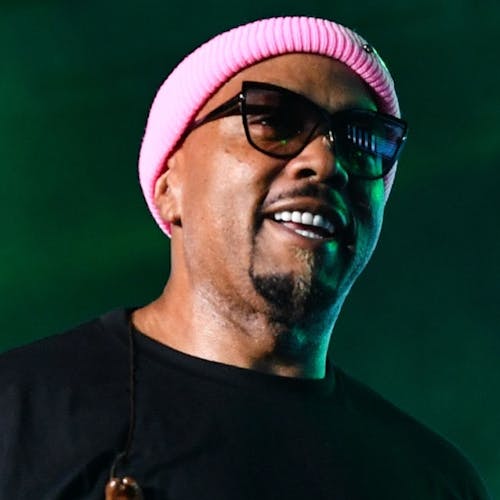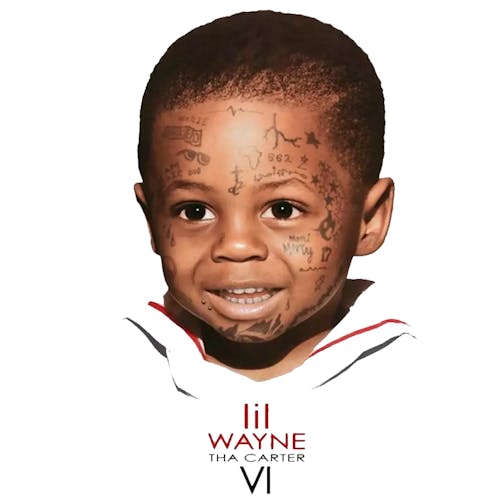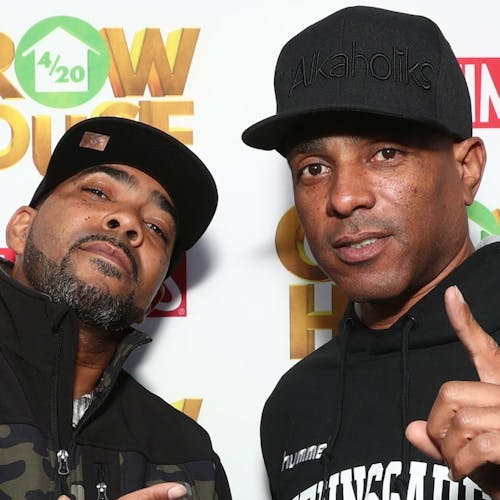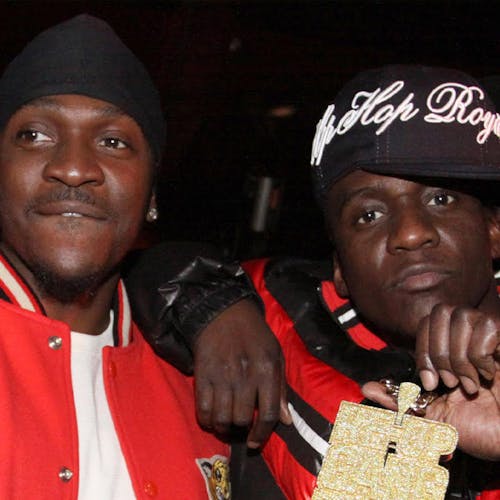
In the 1990s, Hip-Hop style was characterized by baggy clothing, bold colors, and high-end designer brands, and this style has had a lasting influence on fashion today — including brands like Supreme, Off-White, Gucci, and Versace — helping to establish them as leaders in contemporary streetwear and luxury fashion. But some iconic 90s Hip-Hop fashion trends transcended Hip-Hop and entered mainstream culture.
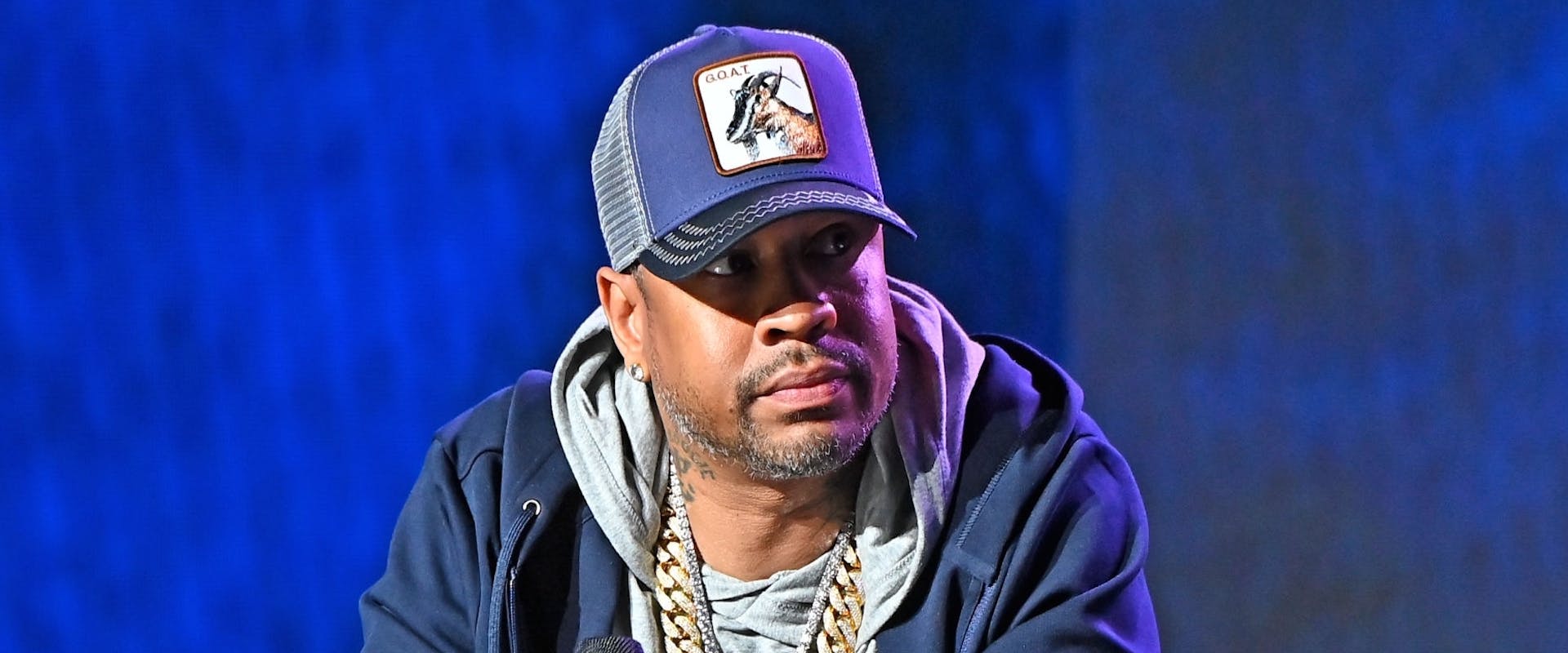
Allen Iverson’s braids
In the NBA, Allen Iverson's braids were often seen as a symbol of his individuality and his willingness to be different. His hairstyle was a reflection of his unique personality and style, and it helped to make him one of the most recognizable players in the league.
Additionally, Iverson's braids also had a cultural impact. They represented a connection to the Black community and their culture, and they helped to break down stereotypes and barriers within the league. Many young African American players began to wear braids as a way to show their pride in their heritage and to emulate Iverson's style.
Iverson's braids also had an impact on the fashion industry. His hairstyle helped to popularize braids in mainstream culture, and it was commonly seen on the heads of both men and women. Iverson's braids became a trend that was followed not only by athletes but also by people from all walks of life.
A SkyPager
The song "Skypager" by A Tribe Called Quest, released in 1991 as part of the album The Low End Theoryreferences the popularity of pagers during the time. The lyrics mention the beeper as a status symbol, and how it serves as a way to communicate with friends, lovers, and even drug dealers. The song also mentions the different types of beepers, and how the sound of the beep can signify a message from a friend or a call to action from a drug dealer.
It is important to note that the song "Skypager" also reflects the social and cultural context of the time, where the pager was not only a technological device but also a cultural symbol of the urban communities, particularly the Black community. The song reflects the way in which the technology was adopted and integrated into the lives of the people and the way it was used to communicate, connect, and even conduct illegal activities.
Clarks Wallabees
The Clark Wallabee shoe has a strong connection to Hip-Hop culture, specifically in New York City and the influence of Jamaican culture. The shoe, which was first introduced in 1967 by the British shoe company Clarks, became popular in the Bronx and Brooklyn during the 1970s and ‘80s, as it was a comfortable and affordable shoe that was worn by many within the Black community.
The shoe's popularity in Hip-Hop culture can be attributed to its association with Rastafarian culture and the conscious movement within the genre. The shoe's design, which features a moccasin-style toe and crepe sole, is reminiscent of traditional Rastafarian footwear. Additionally, the shoe's earthy colors and natural materials align with the Rastafarian emphasis on living in harmony with nature.
In New York City, the Clark Wallabee shoe became particularly popular among members of the Jamaican community, many of whom immigrated to the city during the 1950s and 60s. These immigrants brought their cultural traditions, including Rastafarianism, with them and helped to popularize the shoe among the Black community.
In the 1980s and ‘90s, the Clarks Wallabee shoe was embraced by the Hip-Hop community. Many Hip-Hop artists, such as Slick Rick, A Tribe Called Quest, and The Wu-Tang Clan, have been seen wearing the shoe in their music videos and performances, further solidifying its place in Hip-Hop culture.
Girbaud jeans
In the 1990s, Girbaud jeans experienced a surge in popularity within Hip-Hop culture. The brand, which was founded in France in the 1980s, was known for its unique and distinct design elements, such as the use of bold colors, oversized pockets, and unconventional cuts. These features made Girbaud jeans stand out in a market dominated by more traditional denim brands and helped to establish the brand as a fashion statement within the Hip-Hop community.
The popularity of Girbaud jeans in Hip-Hop culture can be attributed to several factors. Firstly, the brand's unique design elements resonated with the Hip-Hop community's desire for self-expression and individuality. The oversized pockets, for example, were often used to showcase personal items such as jewelry, and the bold colors helped to make a statement and stand out in a crowd.
Girbaud jeans were often worn by popular Hip-Hop artists of the time. Many artists, such as Snoop Dogg, Wu-Tang Clan, and A Tribe Called Quest, were seen wearing Girbaud jeans in music videos, performances, and in their personal lives, further cementing the brand's association with Hip-Hop culture.
Girbaud's marketing strategy also played a role in the brand's popularity in Hip-Hop culture. The company heavily targeted the Black community through its advertising campaigns and sponsored events, such as Hip-Hop concerts, which helped to build a strong connection with the Hip-Hop community.
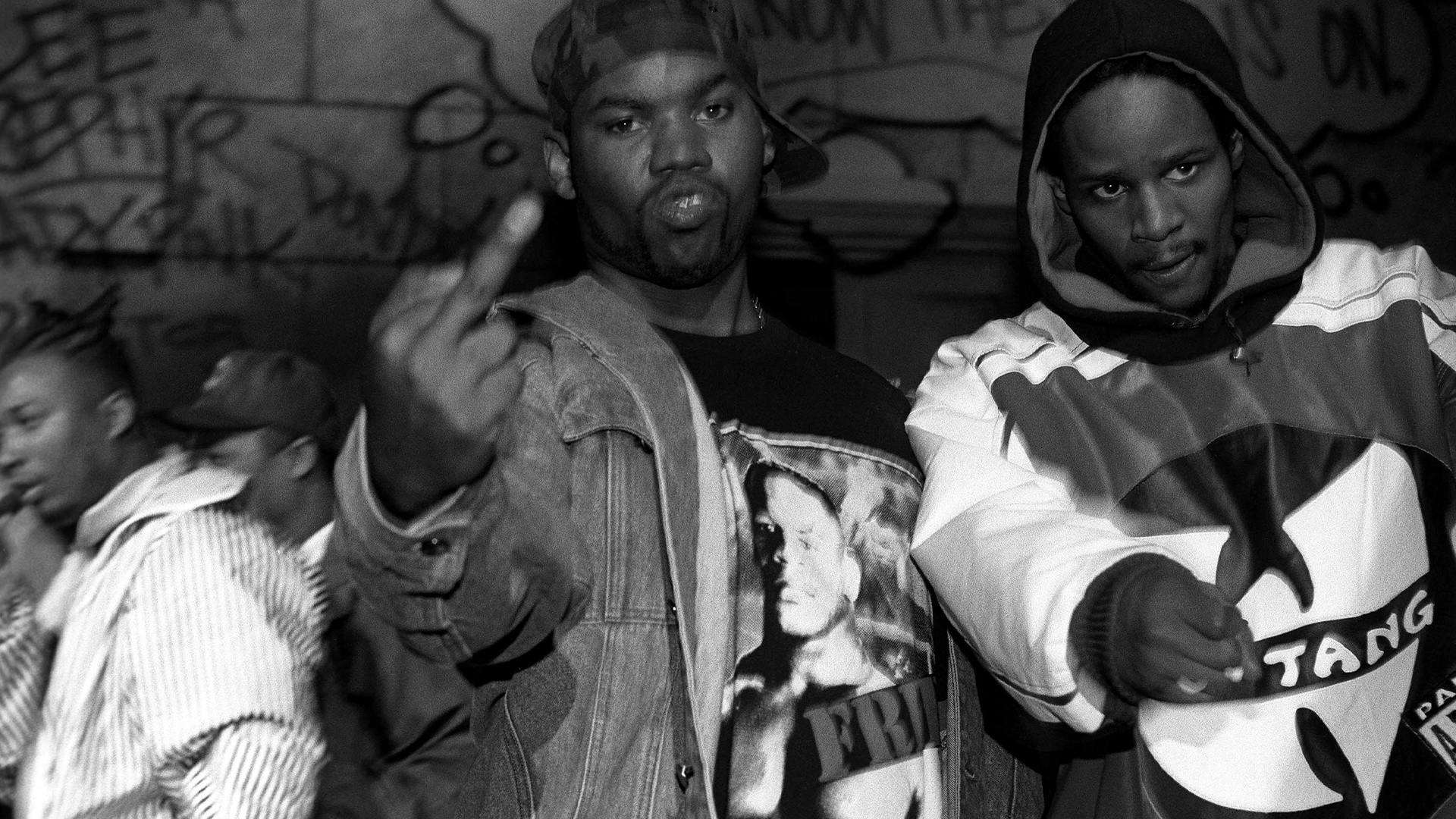
Polo Snow Beach
The connection between Polo's Snow Beach collection, Raekwon, Wu-Tang, and Hip-Hop culture is rooted in the concept of cultural reappropriation. The Snow Beach collection, which was released by Ralph Lauren's Polo brand in 1992, was originally intended for the white, affluent market. However, the collection, specifically the Snow Beach Pullover, was quickly adopted and popularized by members of the Hip-Hop community, particularly Raekwon of Wu-Tang Clan and his association with the collection.
The Snow Beach Pullover, which featured a bright, colorful design and the words "Snow Beach" prominently displayed on the front, became a symbol of status and exclusivity within the Hip-Hop community. The pullover's bold design and expensive price point made it a sought-after item and a sign of wealth and success within the community.
This reappropriation of the collection highlights the power of Hip-Hop culture to subvert societal norms and claim ownership over symbols and items that were once considered exclusive to white, affluent markets.
Triple Fat Goose jacket
The Triple Fat Goose jacket, also known as the TFG jacket, has a strong connection to Hip-Hop culture in the 1990s. The jacket, which was first produced by the Triple Fat Goose clothing company in the late 1980s, was known for its unique design and high-quality construction. It quickly gained popularity within the Hip-Hop community, due to its association with the flashy and luxurious lifestyle that Hip-Hop was promoting at the time.
The TFG jacket was made from high-quality materials such as goose down and was known for its warmth and comfort. The jacket featured a bold and distinctive design, with the iconic Triple Fat Goose logo prominently displayed on the back. This made the jacket easily recognizable and helped to establish it as a status symbol within the Hip-Hop community.
TFG jacket was embraced by many of the most prominent Hip-Hop artists of the time, such as Wu-Tang Clan, Notorious B.I.G., and Nas, who wore the jacket in music videos and on stage.
In the late 1990s, Triple Fat Goose company went out of business, but the TFG jacket continued to be popular in the Hip-Hop community, becoming a vintage item and a sought-after collector's item. The legacy of the TFG jacket has been kept alive by its fans and the Hip-Hop community and has been seen as a representation of the luxurious lifestyle and the flashy fashion trend of the 1990s that was heavily influenced by Hip-Hop.
Starter jackets
Starter jackets, produced by the Starter Corporation, experienced a surge in popularity within Hip-Hop culture in the 1990s. The jackets, which featured the logo of a professional sports team prominently displayed on the front, were originally intended for fans of those teams. However, the jackets quickly gained popularity within the Hip-Hop community, due to their bold designs, high-quality construction, and association with a specific team or city.
The jackets featured bright colors and large logos, which made them easily recognizable and helped to establish them as a status symbol within the Hip-Hop community
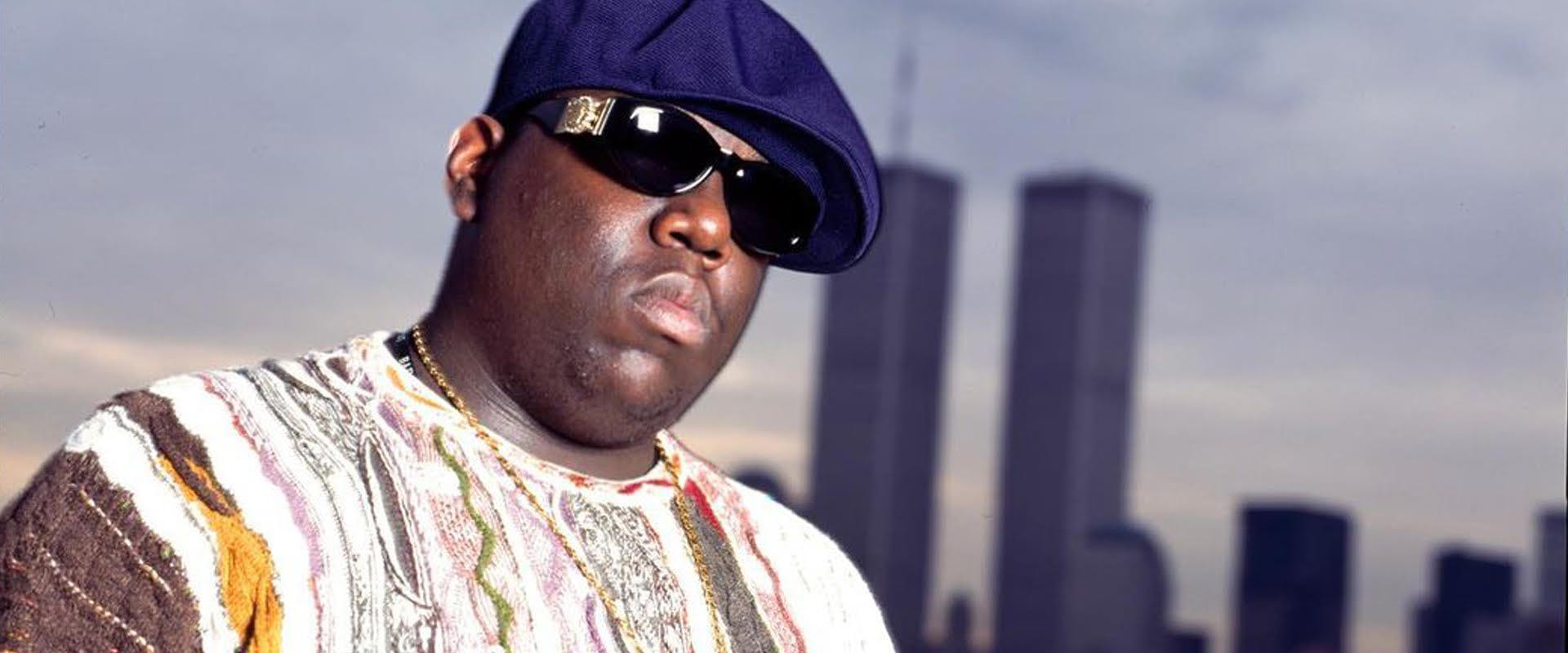
Versace shades
The Notorious B.I.G. was not only a legendary rapper but also a fashion icon. One of his most iconic fashion choices were his Versace sunglasses.
The Versace sunglasses worn by Biggie were part of the brand's Medusa collection, which featured the iconic Medusa head logo on the temples. The sunglasses were characterized by their bold and distinctive design, with bold frames and colorful lenses.
In an interview with Vibe magazine, Biggie's mother, Voletta Wallace said, "Christopher always had a sense of style. He was always into fashion. He loved Versace, he loved Gucci, he loved all of that." This statement highlights the importance of fashion in Biggie's life and how he was always conscious of his appearance and the brands he wore.
The Notorious B.I.G.'s influence on fashion is still felt today. His style, including his iconic Versace sunglasses, continues to be celebrated and emulated by fans and fashion enthusiasts. In an article on GQ, the magazine states, "Biggie's influence on fashion is still felt today, with many current streetwear brands taking inspiration from the rapper's unique style."
Baggy Jeans and Overalls
Baggy jeans and overalls were a hallmark of '90s Hip-Hop fashion. Artists like LL COOL J, Tupac, and N.W.A popularized this look, which is now a staple of streetwear. Whether you're looking for a relaxed fit or a looser cut, baggy jeans and overalls are a must-have for any Hip-Hop fan.
Bucket Hats and Snapbacks
Bucket hats and snapbacks were also popular accessories in the 90s hip hop scene. Artists like Run-D.M.C, TLC, and Will Smith were often seen wearing these hats. Snapbacks continue to be a popular trend to this day, with many brands offering their own versions.
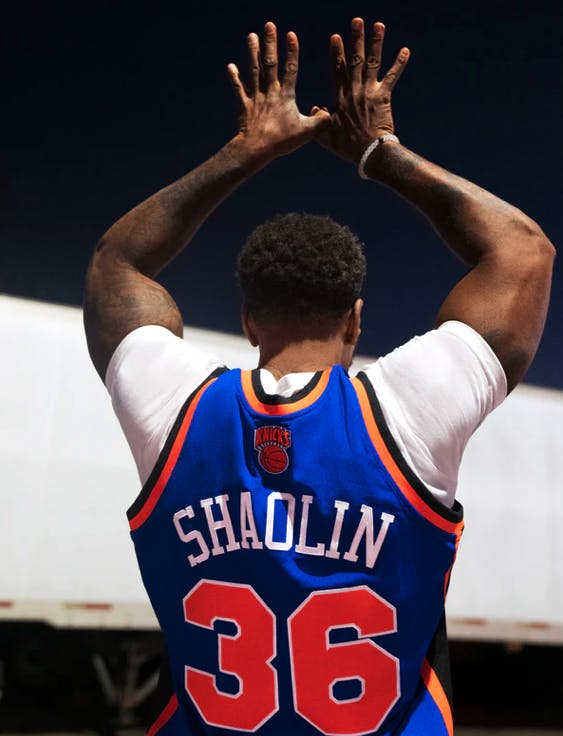
Jerseys and Baseball Caps
Jerseys and baseball caps were also part of the 90s hip hop fashion trend. Fans of hip hop music would often wear jerseys of their favorite sports teams or rappers. Artists like Jay-Z and Queen Latifah were often seen wearing baseball caps, which continue to be a popular accessory in streetwear.
Tracksuits and Hoodies
Tracksuits and hoodies were also a big part of the '90s Hip-Hop fashion trend. Artists like Aaliyah, Kanye West, and the Fresh Prince of Bel-Air all rocked tracksuits and hoodies in their music videos and performances. The velour tracksuit was particularly popular, and many fashion brands continue to release their own versions of this classic look.
Gold Chains and Bandanas
Gold chains and bandanas were also a staple of '90s Hip-Hop fashion. Artists like Tupac and Notorious B.I.G. were known for wearing oversized gold chains, while bandanas were often worn as a headband or tied around the neck. These accessories continue to be popular in streetwear today.
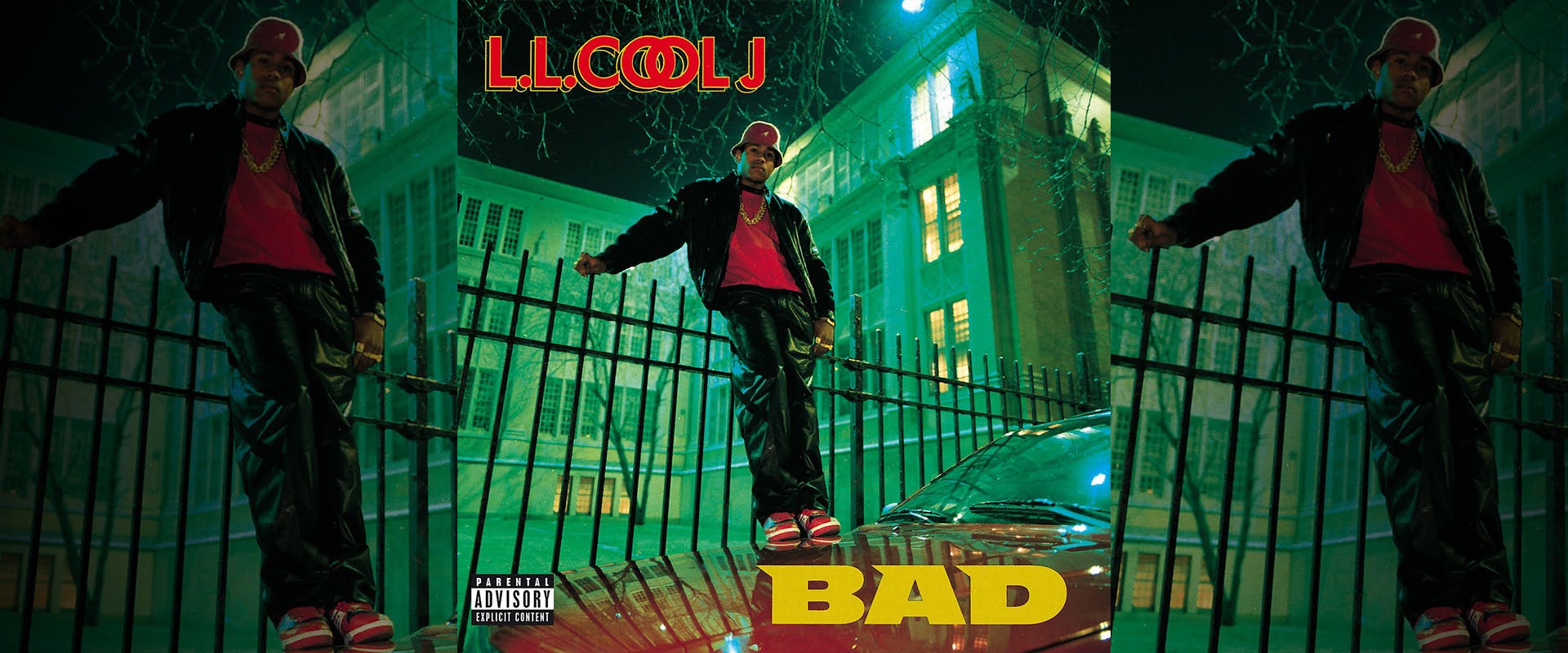
Timberland Boots and Air Jordans
Timberland boots and Air Jordans were the go-to footwear of Hip-Hop fans in the '90s. Timberland boots were popularized by artists like Wu-Tang Clan and Jay-Z, while Air Jordans were worn by everyone from Tupac to Will Smith. Both shoes continue to be popular to this day and are considered classics in Hip-Hop fashion.
So next time you're looking for some retro streetwear inspiration, don't forget to look to the legends of Hip-Hop fashion like Tupac, Biggie Smalls, LL COOL J, and Aaliyah.
